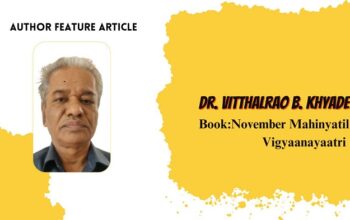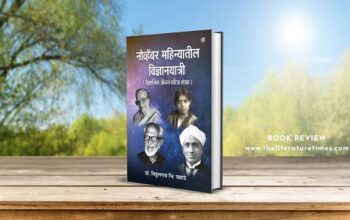Body Transformations by Dr. Vishal Gupta presents itself as a comprehensive manual for anyone seeking to embark on a fitness journey, regardless of age, background, or lifestyle. Marketed as a guide suitable for people aged 10 to 80, working professionals or homemakers, and fitness enthusiasts or beginners, the book ambitiously promises a universally adaptable roadmap to better health and physical transformation. While the book covers an impressive scope and reflects the author’s passion and experience in the fitness industry, it also reveals certain limitations in depth, nuance, and originality that temper its otherwise enthusiastic and motivational tone.
Dr. Vishal Gupta, the book’s author, brings an extensive personal and professional background to the table. With over three decades of involvement in the fitness and bodybuilding world, both as an athlete and educator, he brings credibility and insight into what it takes to build a healthier lifestyle. His tone throughout the book is motivational, echoing the kind of energy one would expect from a seasoned coach. This makes the book accessible and engaging for beginners who may be intimidated by more technical health and fitness literature. His use of informal, almost conversational language reinforces a sense of approachability and encouragement.
The primary strength of Body Transformations lies in its inclusivity. Dr. Gupta makes a concerted effort to ensure that the material speaks to a wide demographic. Whether the reader is a sedentary retiree or a young professional with little time, the book offers practical advice and emphasizes that transformation is not only possible but inevitable with the right mindset and structure. This inclusive philosophy, emphasized repeatedly throughout the text, is empowering. He attempts to dismantle the common excuses associated with fitness — lack of time, age-related concerns, lifestyle limitations — and replaces them with solutions and real-life examples.
However, this strength is also the root of one of the book’s primary weaknesses: its attempt to cater to everyone leads to a certain lack of specificity. In trying to address so many audiences at once, the advice sometimes becomes too generalized. While the motivation is strong, the practical application occasionally suffers from vagueness. Readers looking for tailored, in-depth programs based on different body types, goals, or medical conditions may find themselves underserved. For example, while there are tips on losing weight or toning up, these are often not broken down into nuanced approaches that take into account differences in metabolism, gender, or hormonal imbalances — factors crucial in a personalized transformation plan.
The book also reflects an outdated notion at times, particularly when referencing common modern issues like the obsession with filters and social media aesthetics. Dr. Gupta rightly points out the disconnect between online appearance and real fitness, but his critique leans toward the moralistic rather than constructive. While his point about internal transformation being more valuable than external appearances is well-taken, a more modern, empathetic approach to social media culture would have strengthened his argument.
In terms of structure, the book is reasonably well-organized. It takes readers through a journey beginning with motivation and mindset, moving into basic nutrition, and then delving into different forms of exercise. These sections are interspersed with anecdotes and reflections from Dr. Gupta’s personal journey and experience training clients. This narrative style helps maintain reader interest, even when the content risks becoming too familiar for readers who have consumed similar fitness books in the past. However, the depth of technical information, particularly regarding nutrition science or advanced workout strategies, is somewhat limited. Readers expecting to walk away with a deep understanding of macronutrients, hormonal responses, or injury prevention may find the coverage insufficient.
What the book excels at is its unwavering focus on consistency and discipline. Dr. Gupta emphasizes the importance of forming habits over chasing quick results — a message that is both realistic and often underrepresented in mainstream fitness discourse. He advocates for lifestyle change over temporary diets or short-term transformations, and this philosophy gives the book a solid ethical foundation. The repeated emphasis on mindset, attitude, and discipline gives readers the psychological tools they need to succeed, which arguably matter more in the long run than any individual workout plan.
The writing style, while motivational and easy to digest, sometimes suffers from awkward phrasing and lack of editorial refinement. At points, the tone borders on repetitive, and there are noticeable grammatical missteps that could have been polished in editing. These do not necessarily detract from the book’s core message, but they do affect its professional presentation. Additionally, the title, Body Transformations, might mislead some readers into expecting a visual showcase of transformations or a step-by-step photographic guide, which the book does not deliver. It’s more of a mindset and lifestyle transformation guide, rather than a visual or heavily illustrative manual.
One of the more admirable elements of the book is Dr. Gupta’s emphasis on sustainability and long-term change. He acknowledges the reality of setbacks and the importance of self-compassion in the transformation journey — sentiments that are refreshing in a genre often obsessed with perfection and discipline at any cost. His reference to his brand, FEELFIT24SEVEN, is present but not overwhelmingly promotional, and it’s clear that his intent is more educational than commercial.
In conclusion, Body Transformations serves as a heartfelt, motivational primer for individuals looking to take their first steps toward a healthier lifestyle. It offers encouragement, foundational advice, and a persistent belief in the potential of every individual to change. Dr. Vishal Gupta’s experience in the fitness field shines through, and his passion for helping others is evident on every page. However, the book falls short when it comes to technical depth, individualization, and editorial precision. For those just starting out, it offers a strong push in the right direction. But seasoned fitness enthusiasts or those seeking scientifically rigorous approaches may need to supplement their reading with more specialized resources. Ultimately, Body Transformations is less about sculpting the perfect body and more about building the mental and emotional framework to support lasting health — and in that, it finds its real strength.



